
Death’s Gambit from Adult Swim Games proves a polarizing experience, one that has moments of unique brilliance, and moments of frustrating disappointment. Inspired by FromSoftware’s Dark Souls franchise, and a Soulslike game in spirit and design, Death’s Gambit punctuates ambiance filled environments with grueling fights and challenging encounters. However, the game falls flat of other successful Soulslike platformers with weak controls and movement, and perhaps worst of all, clunky combat that, while exciting to start, quickly becomes dull and repetitive.
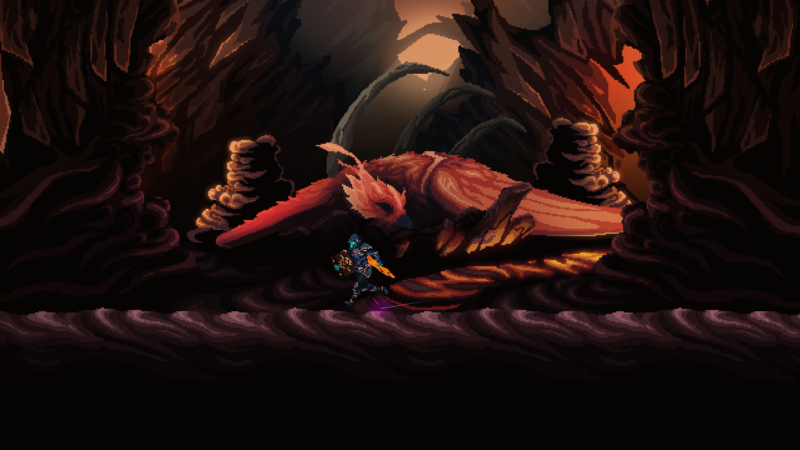
To give some credit where it’s due, Death’s Gambit is perhaps one of the most gorgeous games I have seen in the last year. Its pixel art is stunning, and the environments are layered, beautiful, haunting, and terrifying—some regions are so stunning that I would stop running around and navigating to look at something lovingly drawn. It was also pretty typical for me to pause momentarily in the midst of dialogue to look at the phenomenally designed character art the game uses for those few individuals in the ruined wasteland you are navigating that are friendly. If nothing else playing the game is an astonishing visual experience, one that I never regretted. I often found myself grinding through more punishing moments and environments driven solely by what an admittedly absurd compulsion to see more of the game and its art. Particularly worthy of note are the enemy designs, which are varied, visually complex, and frequently downright frightening. From an animation standpoint as well, the game was stunning. Movements were fluid looking, attacks were colorful and smooth, and nothing felt out of place or visually piecemeal. You even get an adorable mount.
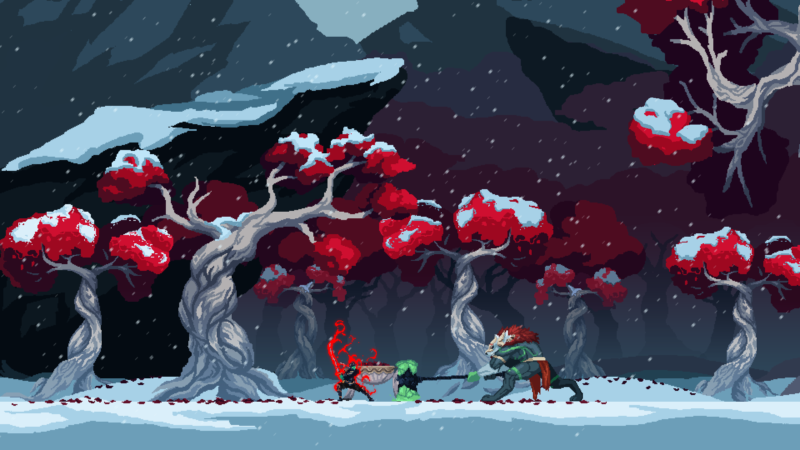
Where the game art tragically fell apart was in the boss designs. While some were objectively fantastic—looking at you Thalamus, Dark Knight, Bulwark of Aldwynn, and Galaxy Mage Amulvaro—most became visually flat over the course of the game, with the first boss, the Owl King, being aesthetically dissonant to the point where I couldn’t really tell what I was even looking at. This was immensely disappointing, given that up until the Owl King boss fight the opening zone had been one of the best introductory experiences I had ever played. While the earlier parts of the opening zone were well staged and challenging but not overly hard, the Owl King fight lacked the polish or difficulty necessary in an beginning boss. I’m not going to pretend he didn’t kill me once or twice, but the deaths stemmed from lack of skill, not gameplay challenge. On my second playthrough, I beat him without taking damage, which has never happened to me before in any video game.
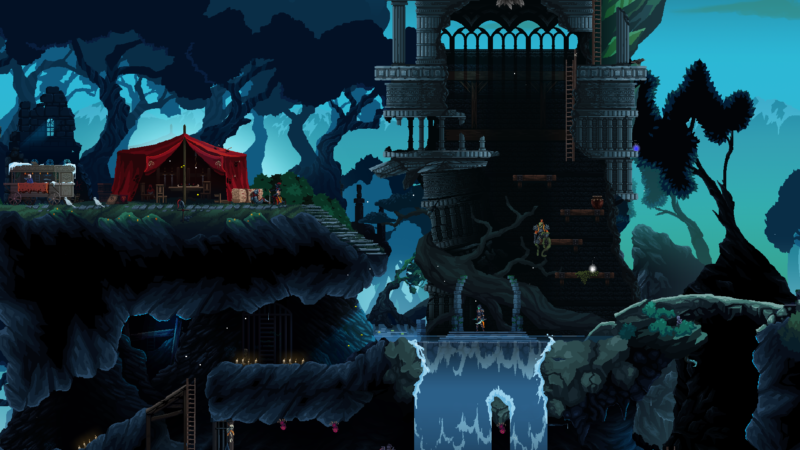
Conversely, some boss fights were astonishingly challenging, even novel. The Thalamus boss fight is less a real fight, and more a survival test, one that keeps you on your toes and forces you to learn routines and patterns. This was Death’s Gambit at its best. Equally, the fight with Origa—while nowhere near one of the game’s most visually exciting bosses—proved an extraordinary challenge that I relished at every moment. She used varied tactics, would interrupt the fight to talk, and even relied upon maneuvers that made me feel as if I was playing against a better player and not just an AI. The final boss fight too was masterful, though I don’t want to spoil anything here. Other encounters, like the Soul of the Pheonix, or Tundra Lord Kaern, were plodding, run-of-the-mill, and monotonous. Tundra Lord Kaern himself is especially poorly designed. The Soul of the Pheonix fight, which happens multiple times but the first encounter comes early on, proves a wild leap in difficulty that felt borderline inappropriate given the previous boss fight with the Owl King. Other challenges, like the Dark Knight, for instance, proved difficult and better placed regarding the player’s experience. This led to a great deal of confusion over the game design, and reagrding what was determining where the bosses fell and how to go about managing them. With so little in the way of real gameplay experience by that point, I didn’t have sufficient skill, practice, or investment to not be discouraged. Metroidvania or Soulslike games live or die by their ability to hook you into the gameplay loop from the start, and I realized very early on then that this game would be less consistent in that field.
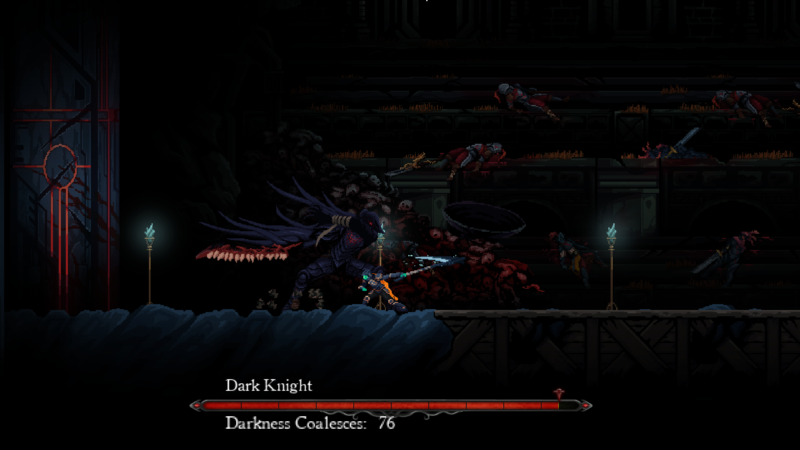
Equally promising in this game was its story. One of the few Soulslike games I have played with an explicit narrative, you play a warrior named Sorun who in his final moments is conscripted into the service of Death to slay all existing Immortals. By doing so, Sorun himself will earn Immortality. The plot becomes far more complicated than this, with some deaths revealing Sorun’s backstory and motivations, and without spoiling anything, some of the game’s best moments are those that embrace this narrative and throw the player into instances of high emotion. They make for astonishingly poignant story instances that feel both earned and novel. In that vein, there isn’t any recent combat platformer quite like Death’s Gambit. The implanting of a story and an independent character upon a Dark Souls style world holds up phenomenally, but the writing is far and away what makes it work so well. Characters you encounter are almost all given voices, and they lend real personality to a game that would be wanting for color without its small but entertaining cast of friendly NPCs. Despite these shining moments and components of the Death’s Gambit experience, I can’t adequately review this game without talking about its deficiencies. Now onto gameplay.
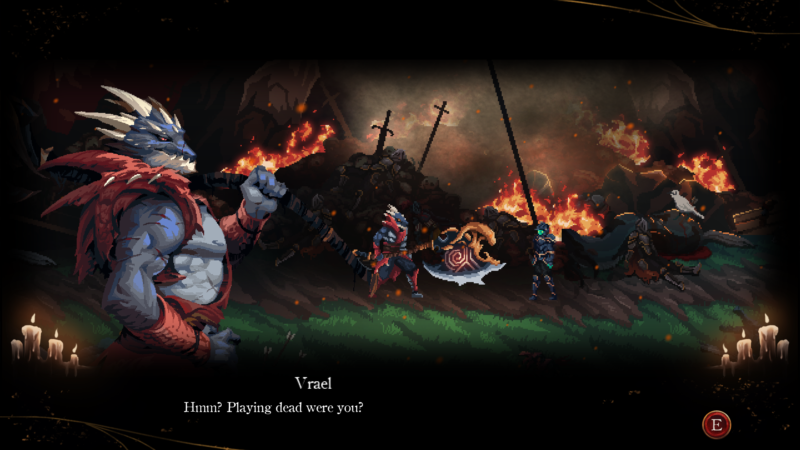
Death’s Gambit, like Dark Souls, asks the player to choose a class when the game starts. They can choose between seven: Assassin, Acolyte of Death, Blood Knight, Noble, Sentinel, Soldier, and Wizard. These seven classes have access to unique abilities, gear, and passive bonuses. All gain the necessary Soul Energy to cast their abilities through different means, the Acolyte of Death, for instance, collects energy through killing things, and the Soldier through blocking attacks. With enough Soul Energy, each class is capable of using unique abilities, which are powerful attacks that give the player an edge in combat encounters. In case you were wondering, each of these attacks is animated gorgeously. While in combat, players can attack, use spells or items, parry, roll to dodge or block attacks with different strength shields. Many of these actions cost stamina, which limits how often you can use them, and in turn, forces you to play more strategically or conservatively to battle tougher enemies. If this all sounds amazing, then I hate to inform you that it plays out less fantastically in practice. Movement is clunky and sluggish, attacks are slow, and hitboxes are inconsistently sized. While riding the adorable mount was fun, the platforming component of the game was genuinely frustrating, as platforms are not always as wide as they look or sometimes even wider than you thought they were. This game also has one of the most frustrating jumping mechanics I have ever experienced, with height, speed, and air control being inconsistent from one jump to the next! I literally never knew whether something that had worked two runs before would make me fall and start the platforming puzzle all over again. Thank goodness that the game didn’t include fall damage. My death count would have quadrupled.
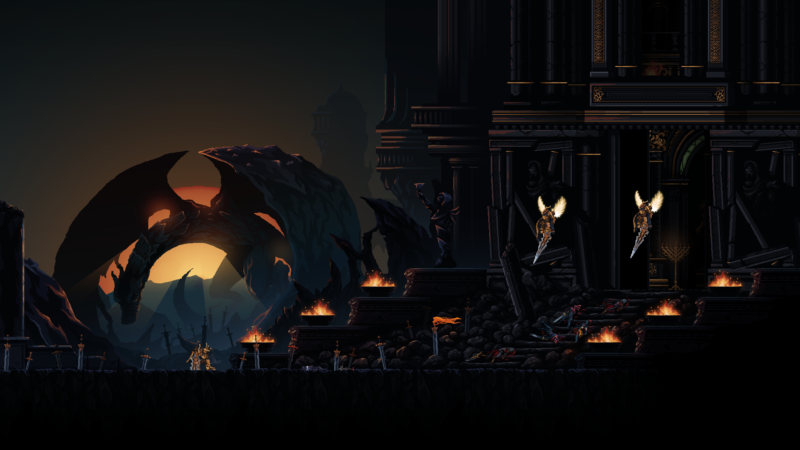
It made the primary gameplay loop not so much tricky as wholly arcane. You never thoroughly knew what the game wanted from you, or whether something that looked accomplishable was something you could even do! Some environmental puzzles required educated guesswork, and thus proved an exciting challenge that relied on you to learn from and understand previous failures. Most, however, necessitated reflexes and timing that the game’s jumping and rolling mechanics did not consistently allow. There is almost nothing in the world more maddening than knowing some mechanic works, but being incapable of doing it because the game itself hinders your ability to execute the necessary task.
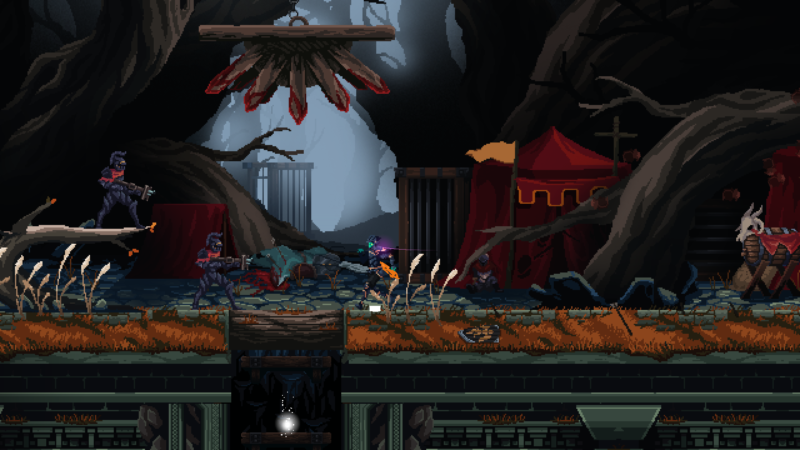
Now I will own up to the fact that as I played this game on PS4, it may merely be a matter of the joystick not being the best way to experience this gameplay loop. It’s possible playing with a keyboard and mouse solves this issue entirely. But with response times feeling as sluggish as they do, and with mechanical inconsistencies being so thorough, this seems unlikely. It’s also possible that as with all Soulslike games, there is an element of needing to “get good.” While I will own up to the fact that I am almost certainly not good at this game, I did complete it. If even after hours of playing I cannot reliably master the necessary mechanics, I am more inclined to say that something within the game has failed me. Games like Dark Souls or Hollow Knight, and even the more recent Dead Cells, all rely upon a difficulty made fair by the simplicity and learnability of the necessary mechanics. While Death’s Gambit provides astonishing ambiance and rewarding story experiences, its failure to implement that simple precept—that for gameplay to be challenging but fair it should first be masterable—into the gameplay hinders its overall quality drastically. No amount of adorable in-game mounts could fix that. For that, I give Death’s Gambit a 6/10.
Here is the Death’s Gambit Cinematic Launch Trailer:
Death’s Gambit is available for PlayStation 4 computer entertainment through the PlayStation Store, Windows PC via Steam, and GOG.com for $19.99.
PlayStation 4 Review
-
Overall Score - 6/106/10

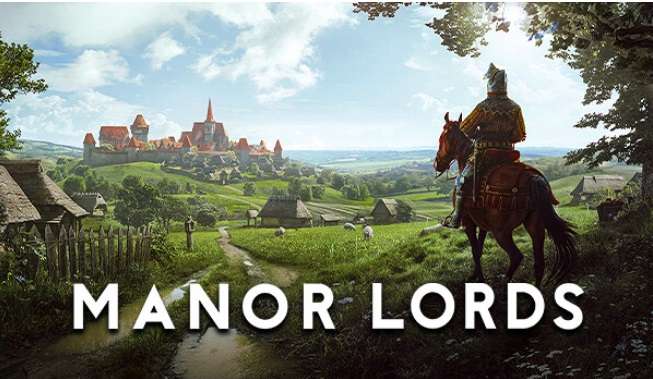

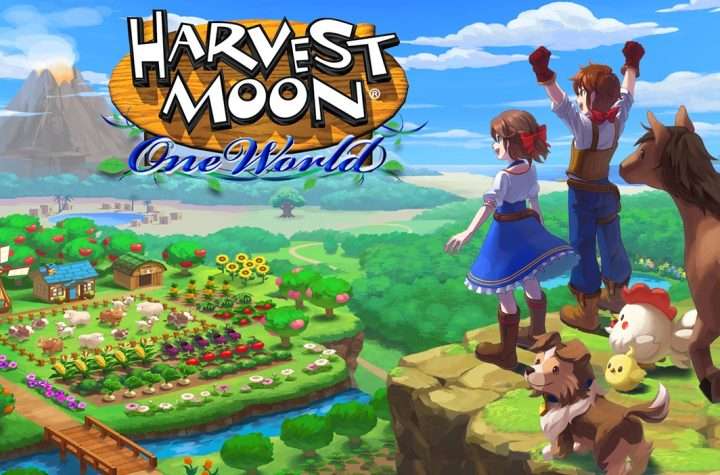

More Stories
MANOR LORDS Now Available via PC Game Pass, Steam, GOG, Epic Games Store
Metro Simulator 2 Review for Xbox
GTA Online this Week Features New Community Series, Free Tees, Nightclub Bonuses, and More